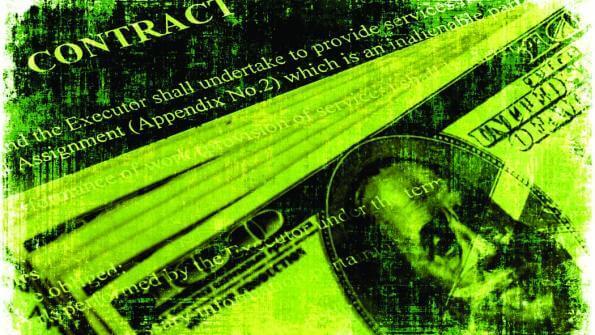
One of the simplest reasons to rent or lease is to maintain cash reserves. Cash is king in just about any business. Tying up cash in equipment purchases can limit a company’s growth potential and limit the flexibility needed to meet cash flow demands during economic downturns or slow business cycles. Case in point: During 2009 and part of 2010, many businesses failed due to their inability to obtain credit to meet even the simplest of needs, such as payroll. Businesses that had cash on hand to ride out long periods of decreased cash flow weathered the economic downturn far better than those with minimal cash reserves. In addition, renting and leasing often require nothing more than a deposit and first-period payment, while purchasing can require a substantial cash down payment.
Additionally, unlike lines of credit that usually have variable rates, rental and lease payments are fixed. Regardless of what happens in the financial markets, rental and lease payments stay the same throughout the contract, thus limiting a customer’s exposure to skyrocketing interest rates that can hinder cash flow.
Asset management often is associated with matching trucks and routes. But with renting and leasing, asset management is applied to a different task: cost control. By renting a front loader, for example, a hauler can forego the expense of routine maintenance as the leasing company can absorb this expense as part of a service contract. By having the leasing company perform the maintenance, the responsibility of completing repairs in a timely manner can be defined as part of the lease contract, thus ensuring that preventative maintenance performed by leasing company maximizes equipment uptime.
In addition to reduced maintenance costs, renting is advantageous in meeting short-term equipment needs. For instance, if a hauler is awarded a new contract that starts within a week, renting equipment allows the hauler to quickly take delivery of equipment to fulfill the contract requirements until new equipment arrives. There are also seasonal demands for collection equipment. These seasonal fluctuations have historically required a company to own spare equipment. While having access to spare equipment appears to be a great advantage, it can actually hinder a business by increasing maintenance expenses, tag and title fees, equipment insurance and the need for storage space as well as limiting operating cash. Renting allows a hauler to collect extra yard waste in the fall, address special collection events, such as festivals, and natural disasters like tornadoes and hurricanes, with the rental expenses coming off the books once that period ends.
Renting and leasing also help asset managers keep up with technological trends, facilitating the swapping of field assets for more cost-effective equipment. By leasing, a hauler has the capability to efficiently move from manual to fully automated collection without needing to dispose of rear loaders before purchasing a new automated side loader.
While the refuse industry has historically been slow to adopt new technology, in the last couple years an explosion of new products has hit collection routes, including radio frequency identification (RFID), scales, on-board route management and billing systems, global positioning systems (GPS), vision systems and more. Renting equipment gives a waste services firm the ability to “test drive” this technology to ensure it yields the desired return on investment before going “all in” across the fleet with a capital-intensive investment. Renting and leasing also allow a company to “trade up” to a different truck if business conditions change, thus providing the latest technology for the hauler.
Renting and leasing also benefit a company’s balance sheet. Leasing eliminates depreciation schedules since lease payments are generally line-item expenses on the profit and loss (P&L) statement. By not having equipment debt on your balance sheet, your company is more attractive to financial institutions for other fiduciary needs. Since lease payments are usually treated as a pre-tax business expense, a company benefits by reducing its tax exposure.
There are a few instances in which renting is not an effective option. For example, long-term renting (beyond two years) during which the vehicle is not swapped for a new truck can result in costly chassis and body maintenance as the truck ages. Thus, renting the same truck over several years begins to mitigate the financial benefits renting affords.
That said, the ability to have individualized financial models such as renting, leasing and rent-to-own allows a business to more effectively balance the need for cash flow and the need to add equipment. By adding new equipment that enables cash flow without requiring major capital investments, renting and leasing is an effective tool in any company’s toolbox.
The bottom line is that renting and leasing minimizes demands on cash flow, eases the impact of equipment obsolescence, maintains existing lines of credit and reduces tax liability.
Bob McHugh is the key account manager for new business development with Environmental Solutions Group based in Chattanooga, Tenn. Robert Mecchi is vice president of business development for Tampa, Fla.-based Big Truck Rental.
Source: http://waste360.com/accounting-and-financing/giving-rent-its-due
